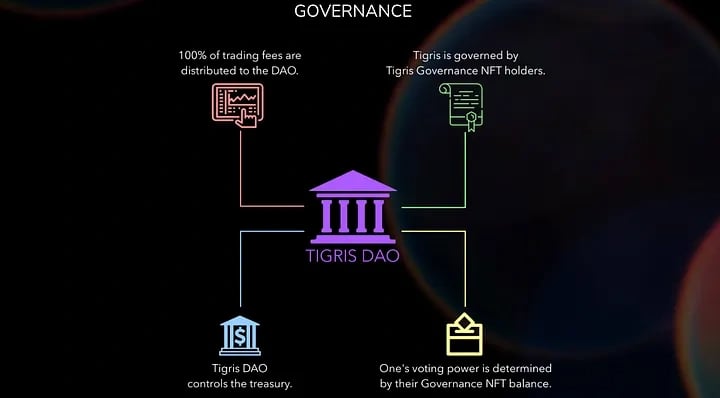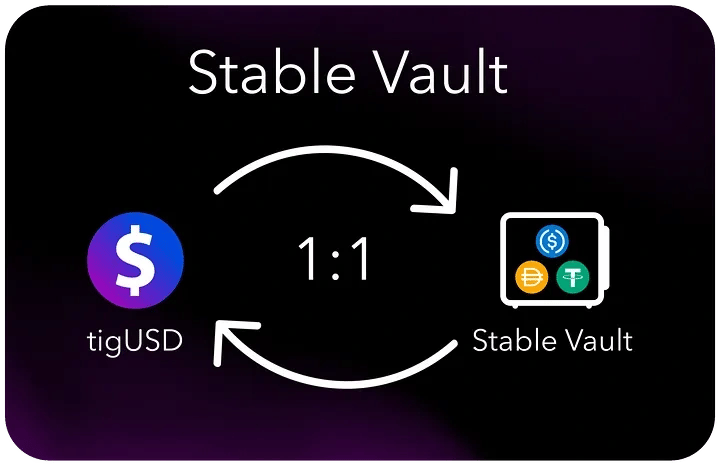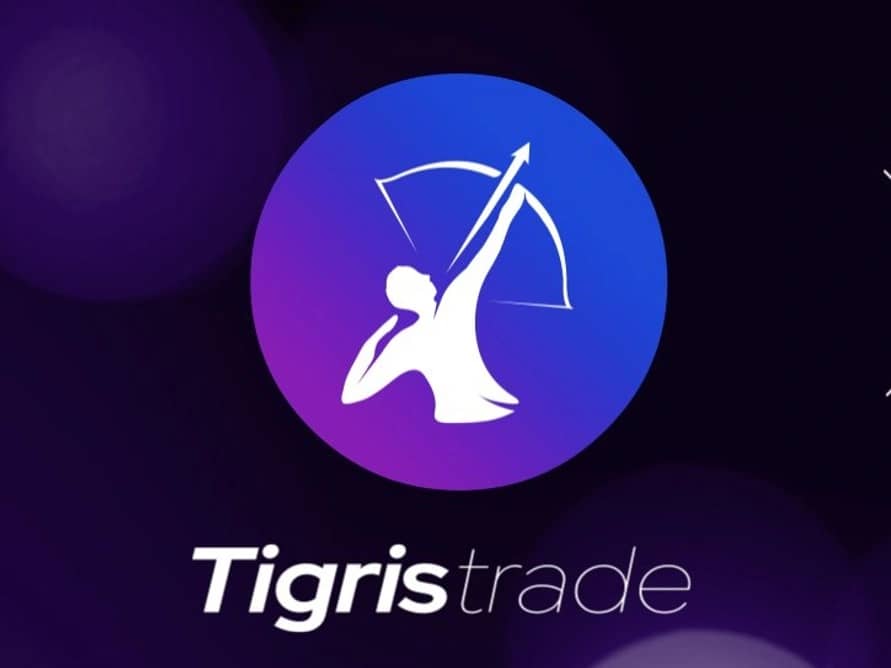Subscribe to wiki
Share wiki
Bookmark
Tigris Trade
The Agent Tokenization Platform (ATP):Build autonomous agents with the Agent Development Kit (ADK)
Tigris Trade
Tigris is a decentralized platform for synthetic leverage trading on Arbitrum, Meter, and Polygon networks. It enables individuals to trade crypto, forex, and commodities directly from their digital wallet. [1]
Overview
Tigris operates as a synthetic leverage trading platform, distinguishing itself with an off-chain oracle system for price data, ensuring instant trade settlement without compromising security. Known for its low fees and rapid execution, Tigris imposes a transparent fee structure of 0.1% on trade opening and closing, which can only be altered through DAO voting. While variable funding fees apply, they do not impact stakeholders' revenue share, being directly paid and received by traders with active positions. Additionally, Tigris offers advanced trading features like partial closures and margin adjustments for open positions, with trades executed against the collateral pool. [1]
History
When Tigris launched in September 2022, the platform used a governance NFT model. Governance NFT holders were the main stakeholders of the Tigris Trade DAO and received a share of the revenue generated by Tigris Trade. At that time, the DAO resolved to distribute revenue equally, with half allocated to stakeholders and the remaining portion deposited as DAI into the Stablecoin Vault for use as collateral, aiming to boost trade size and leverage caps. The DAO retained the flexibility to adjust revenue distribution, potentially increasing the portion allotted to Governance NFT holders, provided ample liquidity existed in the vault. [2][3]

Features
Oracle Architecture
Tigris Trade employs an oracle infrastructure that combines oracles and keepers for seamless operation. Oracles retrieve off-chain price data from Pythnet, enhance it with additional information, and sign the data before transmitting it to keepers. Users submit orders to keepers through HTTPS interaction with the UI, enabling immediate on-chain execution and settlement. Oracle nodes connect to the Pythnet price feed, directly delivering asset prices and related data to Tigris users for placing market orders. This data encompasses asset price, spread, timestamp, node address, market status, and Oracle signature. When users initiate trades, this data and signature are incorporated into the transaction input parameters, ensuring on-chain validation. This results in dependable prices for traders, with no slippage, as asset prices are locked in upon trade initiation. Additionally, order execution is instantaneous, requiring only one transaction, streamlining platform operations. The platform's speed is contingent upon the blockchain's speed. [4]
Liquidity Vault
Tigris's Liquidity Tokens (LT) are stablecoins pegged to a token and fully backed by it, ensuring a stable peg at a 1:1 ratio. These tokens are consistently overcollateralized to maintain stability. The margin is automatically placed into the corresponding Liquidity Vault when initiating a trade on Tigris. Upon closing the position, traders receive the respective Liquidity Token as payment. Liquidity Vaults serve as counterparties to traders, with negative PnL and liquidations contributing to their collateralization, while positive PnL has the opposite effect. Users can swap any available Liquidity Token to or from a native token in a Liquidity Vault, maintaining a 1:1 ratio. Additionally, users can exchange their native tokens for LTs and stake them in their respective vaults to provide liquidity. Staked Liquidity Tokens earn a percentage of trading fees, with rewards automatically claimed upon adding LTs to an existing stake. [5]

Binary Options
Binary options enable users to speculate on short-term price movements of assets within a fixed duration, ranging from 4 minutes to 4 hours. If the option closes in the money, the payout is 70% of the collateral; otherwise, the entire collateral is lost. There are no fees, but a spread is applied to the opening price, ensuring instant trade execution with guaranteed prices. Upon opening an option, 5% of the collateral value is distributed to stakers, with 3.5% allocated to TIG stakers and 1.5% to tigUSD stakers. Collateral from losing options remains within the trading vault, bolstering its collateralization. [6]
TIG
Tigris (TIG) is the protocol token allowing users to stake for trading fee rewards and participate in governance decisions. Stakers receive 70% of market orders trading fees and 63% of limit and stop orders trading fees, with the remaining 7% allocated to incentivize executions handled by bots. Trading fee profits are distributed in real-time as tigUSD and tigETH and can be claimed via Tigris's website or the staking contract. Stakers earn profits only on the chain they are staking on. TIG operates as an Omnichain Fungible Token and can be bridged across different chains where Tigris is deployed, facilitated by LayerZero. [7]
Tokenomics
TIG has a total supply of 2,000,000 tokens and had the following distribution: [7][8]
- 787,800 tokens (39.3%) for current Gov NFT holders, including team and treasury NFTs (1300 TIG for 1 NFT)
- 700,000 tokens (35%) were sold in a 400k public sale and a 300k whitelist sale
- 218,300 tokens (10.915%) for the team
- 193,900 tokens (9.695%) for the treasury
- 100,000 tokens (5%) reserved for airdrops
xTIG
xTIG is the reward token for traders earning by generating platform fees. It is non-transferable and can only be claimed after the 1-week trading window, known as an epoch. Every 24 hours, starting at midnight GMT, Tigris distributes 100 TIG among traders based on the fees they generate. Transactions using WETH as collateral receive double weight in the xTIG calculation to encourage using the tigETH liquidity pool. Traders can claim their tokens as xTIG and choose to unlock them immediately with a 50% penalty, wait until the end of the day to unlock and withdraw them as TIG or leave them to earn trading fees like staked TIG. Out of the total supply of 2 million TIG, 100,000 tokens are reserved for volume mining, with trading rewards live on Arbitrum at 100 TIG per day, subject to adjustments if necessary. Additionally, xTIG offers the option to add extra rewards, allowing other projects to sponsor trading epochs on Tigris. [9][10]
Partnerships
Arbitrum
On October 12, 2022, TigrisDAO announced the imminent launch of Tigris Trade on Arbitrum. To support the deployment on Arbitrum, advanced trade management functionality was introduced, and another batch of Governance NFTs was made available for sale. The goal was to tap into new markets with deep liquidity and bring Tigris Trade to a broader audience. The recent rollout of Arbitrum Nitro promised improved performance, setting the stage for Tigris Trade's fast, efficient, and real-time pricing architecture to shine. New smart contracts were deployed to streamline the user experience and facilitate easier integration of Tigris Trade infrastructure by partners. [11]
Pyth
On March 16, 2023, Tigris Trade integrated Pyth Price Feeds for its Oracle infrastructure in a v2 update, providing traders with fair and low-latency pricing. The low latency and wide asset coverage offered by Pyth enhance the system's reliability and operational smoothness. [3][12]
See something wrong?
The Agent Tokenization Platform (ATP):Build autonomous agents with the Agent Development Kit (ADK)
